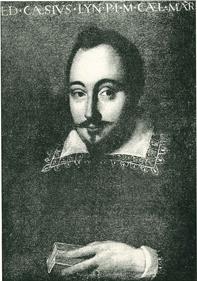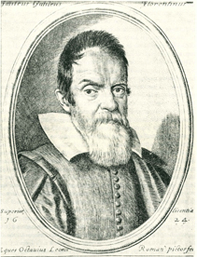

Federico Cesi
Federico Cesi (1586-1630) was an Umbrian-Roman patrician, passionate scholar of natural sciences, especially botany. To promote and cultivate these naturalistic studies, he founded in Rome in 1603a partnership with three young friends, the Dutchman Giovanni Heckius (Italianized in "Ecchio"), the Marche Francesco Stelluti and the Umbrian Anastasio de Filiis, calling their company the Accademia dei Lincei, for the exceptional acuity of gaze attributed to the lynx, a feline of still not extinct species, taken as a symbol of the learned company of scholars. Object of his study, in the drawingof the Cesi, were all the sciences of nature, to be investigated with free experimental observation, beyond any constraint of tradition and authority. This is the great novelty that has characterized the Lincei since their birth, among the crowd of Academies of which the Italian society of the sixteenth and seventeenth centuries was rich: the interest brought essentially on the natural sciences (most of thatthe other Academies was instead literary and wordy), and an attitude of respect but not of constraint towards the previous Aristotelian-Ptolemaic tradition, which the new experimental science sometimes questioned.
Galileo Galilei
This became clear immediately at the beginning of the life of the new Academy, which counted from 1611 among its Members the great nameand Galileo.
Also in those early years, and outside the Galilean circle, the Academy expanded according to the generous plan of Cesi to many other Italian and foreign scholars, such as the Neapolitan Della Porta and the German Faber (Schmidt), chancellor of the Academy. To this oldest lynx nucleus, whose collegial activity is recorded in the acts of the Lynceographum now being publishedimportant publications and research in astronomy, physics, and botany date back to 1651, including the study of sunspots and the famous Galilei's Tester himself, and the so-called Mexican Treasure on the flora, fauna, and pharmacopoeia of the New World, whose very laborious story of drafting and printing lasted for several decades.
As of this date, about half dryafter the foundation of the Academy, the first and most illustrious phase of his long life had already ended. The intense activity of the Founder and Princeps, the Cesi, was abruptly interrupted by his death, which caught him at just 45 years of age in 1630.
Upon Cesi's untimely death, his favorite creature, the Academy, wandered and became disheartened, despite the generous efforts of scholars such as the Stelluti and Cassiano dal Pozzo to save its material and ideal patrimony in adverse luck.
The
distinguished name and memory of this illustrious Roman association remained, which for two centuries more than one tried to renew: most important of all, the nineteenth-century attempt of Abbot Scarpellini, with his own physical-mathematical Academy entitled "Nuovi Lincei". But a decided reconnectionthe Caesian Lynceans was only achieved by Pius IX, who in 1847 re-established the seventeenth-century Academy with the ancient name, as the "Pontifical Academy of the New Lynceans".
Presidenti emeriti dell'Accademia
Lamberto Maffei
Giorgio Parisi
Alberto Quadrio Curzio

